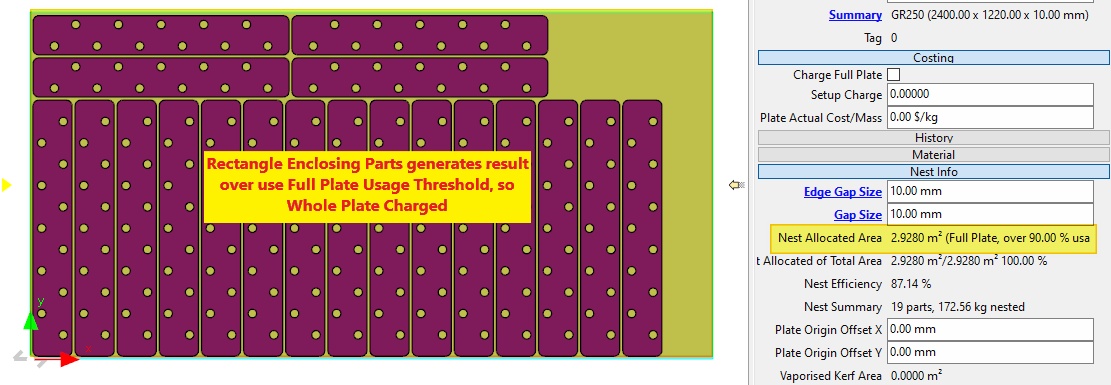Nest Efficiency is a measure of how tightly parts have been nested together. It will almost never be 100%, and the best achievable values will depend on the size, shape and material of the parts nested as well as crop line definitions.
It is defined as:

ie "the sum of the nested part occupied areas, over the nest allocated area"
Where:
This is the total area of plate each nested part instance occupies, ie the area of plate into which other parts cannot intrude. This is normally the the part area expanded by half the inter part gap of the plate. If the part contains large holes into which other parts may be nested, these holes are subtracted from the occupied area. Small holes and cutouts are however filtered out, as there is no chance other parts can fit within them.
A part occupies area in which other parts cannot reasonably be nested.
This is computed via a grid based approximation:
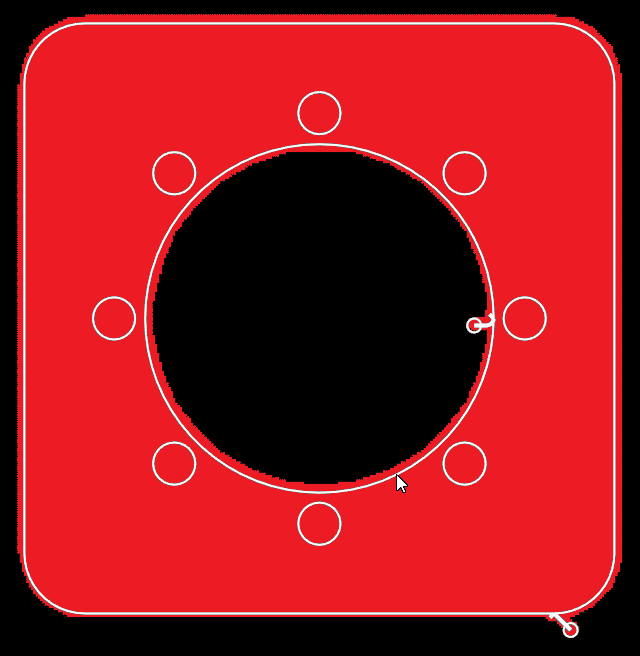
Occupied Area shown in red. Note it extends beyond part boundaries, covers "small" holes, and for pre-processed parts includes leads and pierce allowance (or pre pierce circles if used)
This is a measure of how much plate we are saying we will "use up"; for quoting its is how much material we will charge out. Cropping to produce offcuts will reduce the allocated area, as we are defining regions of the plate to be returned to stock.
▪If Charge Full Plate is ticked on the nested plate's properties, the entire plate area is used
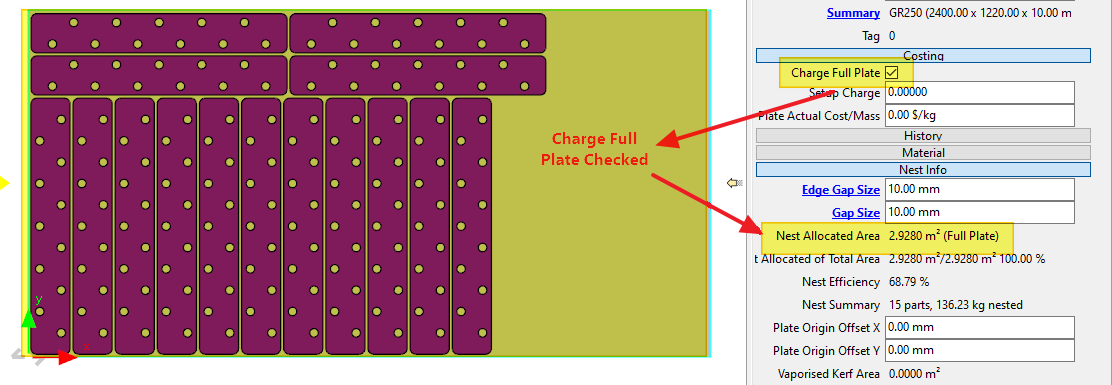
▪Else, if a crop line has been placed, the area under the crop line is used
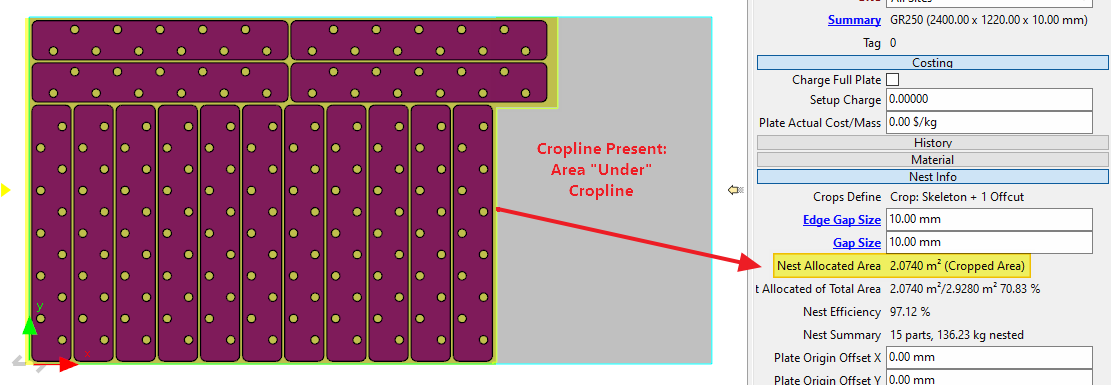
▪Else, the expanded extents rectangle containing the nest is used.
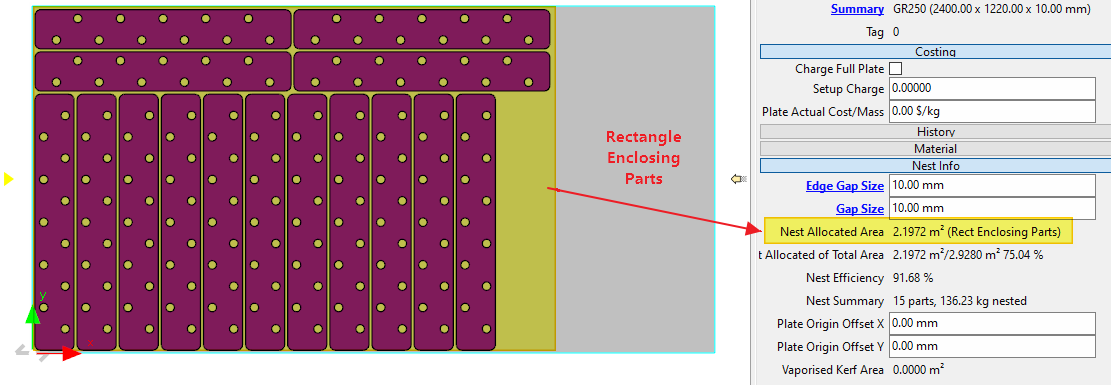
If parts are scattered at the corners of a plate, then the whole plate area may be allocated, over-estimating the plate usage.
In v4.5.333 there is an upper limit on the part area to use in this situation. (See Below)
Finally we assess whether "practically all" the plate has been allocated, comparing to the Full Plate Usage Threshold. and scaling up to the full plate area if necessary.
